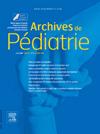婴儿期全身动脉钙化(GACI)
IF 1.3
4区 医学
Q3 PEDIATRICS
引用次数: 0
摘要
婴儿期全身动脉钙化(GACI)是一种超罕见的常染色体隐性遗传疾病,与ENPP1和ABCC6中的致病变体有关,ENPP1是导致这种疾病的主要基因,而ABCC6则涉及一小部分受影响的个体。ENPP1和ABCC6的功能缺失致病变体会导致PPi/Pi比例失调,从而促进外周组织中羟磷灰石的矿化。GACI 最初的特征是动脉和软组织的异常异位矿化过程。近一半的患者在出生后 6 个月内死于心血管并发症,因此早期诊断预后较差。近年来,我们对 GACI 的长期自然病史、血管钙化引起的复杂症状、软组织过度矿化、被称为 ARHR2 的低磷血症、骨骼矿化不足等后果以及假性黄疽弹性瘤(PXE)可能出现的特征的了解取得了进展。事实上,除血管钙化外,GACI、PXE 和 ARHR2 还具有共同的病理生理途径和临床特征。重度 GACI 的治疗方案大多以对症处理为主,包括在婴儿出生后早期开始使用双膦酸盐,如 PPi 的类似物依替膦酸盐和帕米膦酸盐。专家和协调的多学科团队的随访包括动脉高血压的治疗、降钙素三醇和磷的调整、助听器以及可能出现的血管样条纹的早期检测。希望正在进行的基础和临床研究能够开发出有效的疗法,专门针对 PPi 调节异常和这种疾病所涉及的其他机制。本文章由计算机程序翻译,如有差异,请以英文原文为准。
Generalized Arterial Calcification of Infancy (GACI)
Generalized arterial calcification of infancy (GACI) is an ultra-rare autosomal recessive disorder associated with pathogenic variants in ENPP1, the major gene involved in this condition, and in ABCC6, which is involved in a small fraction of affected individuals. Loss-of-function pathogenic variants of ENPP1 and ABCC6 lead to perturbations in the PPi/Pi ratio, thereby promoting hydroxyapatite mineralization in peripheral tissues. GACI is initially characterized by an abnormal ectopic mineralization process in arteries and soft tissue. Nearly half of the patients die within the first 6 months of life from cardiovascular complications, hence the poor prognosis associated with an early diagnosis. In recent years, progress has been made in our understanding of the long-term natural history of GACI, the intricate symptoms due to vascular calcifications, the overmineralization of soft tissues, of hypophosphatemia designated as ARHR2, and of the consequences such as undermineralization of the skeleton, but also of the features possibly seen in pseudoxanthoma elasticum (PXE). Indeed, GACI, PXE, and ARHR2 share common pathophysiological pathways and clinical features beyond the vascular calcifications. Treatment options for severe forms of GACI are mostly based on symptomatic management, including the option of starting bisphosphonates early after birth, such as etidronate and pamidronate, analogues of PPi. Follow-up within an expert and coordinated multidisciplinary team includes treatment of arterial hypertension, calcitriol and phosphorus adjustments, hearing aids, and early detection of possible angioid streaks. It is hoped that ongoing basic and clinical research will lead to the development of effective therapies that specifically target the abnormal PPi regulation and the other mechanisms involved in this disorder.
求助全文
通过发布文献求助,成功后即可免费获取论文全文。
去求助
来源期刊

Archives De Pediatrie
医学-小儿科
CiteScore
2.80
自引率
5.60%
发文量
106
审稿时长
24.1 weeks
期刊介绍:
Archives de Pédiatrie publishes in English original Research papers, Review articles, Short communications, Practice guidelines, Editorials and Letters in all fields relevant to pediatrics.
Eight issues of Archives de Pédiatrie are released annually, as well as supplementary and special editions to complete these regular issues.
All manuscripts submitted to the journal are subjected to peer review by international experts, and must:
Be written in excellent English, clear and easy to understand, precise and concise;
Bring new, interesting, valid information - and improve clinical care or guide future research;
Be solely the work of the author(s) stated;
Not have been previously published elsewhere and not be under consideration by another journal;
Be in accordance with the journal''s Guide for Authors'' instructions: manuscripts that fail to comply with these rules may be returned to the authors without being reviewed.
Under no circumstances does the journal guarantee publication before the editorial board makes its final decision.
Archives de Pédiatrie is the official publication of the French Society of Pediatrics.
 求助内容:
求助内容: 应助结果提醒方式:
应助结果提醒方式:


